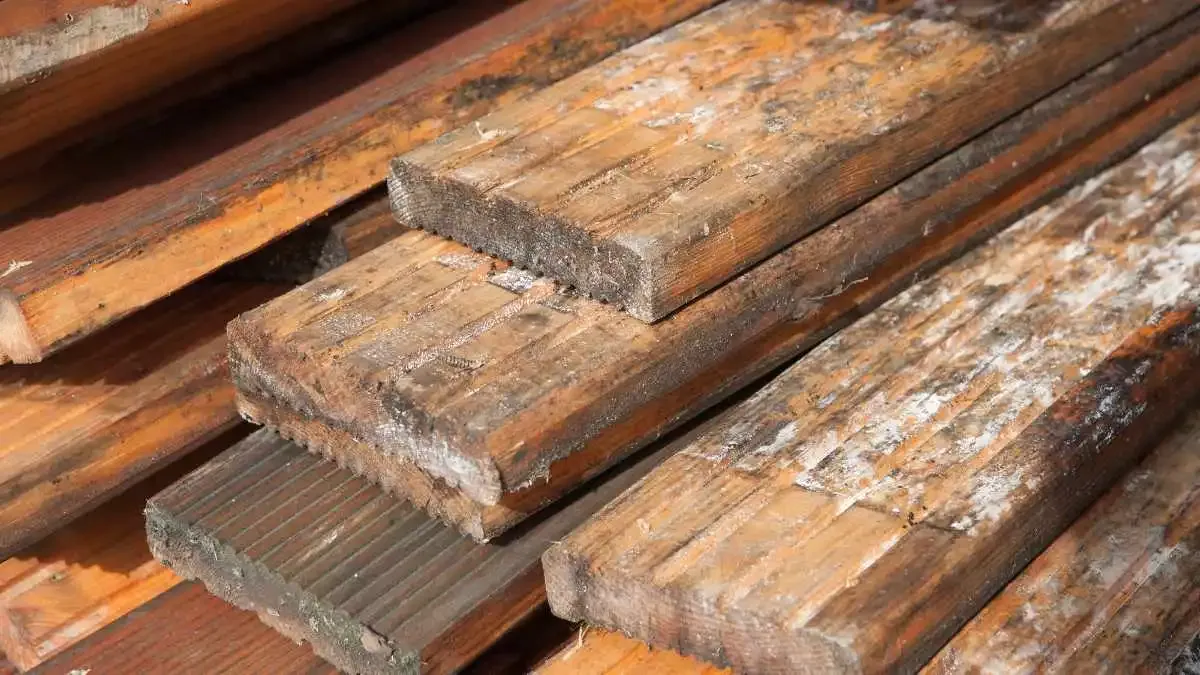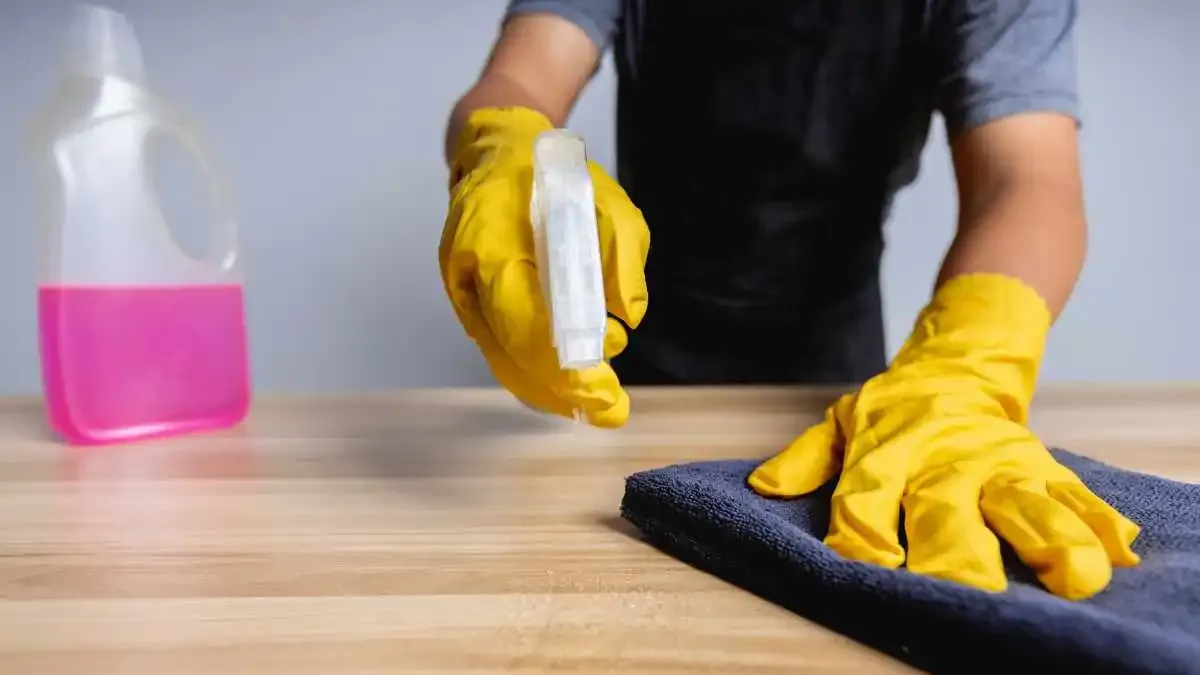Quick and Easy Ways to Remove Mold from Wood
POSTED ON April 28, 2024

Have you found stunning driftwood or any wood furniture covered in mold? No worries! We will show you quick and easy yet powerful ways to banish that mold.
Removing mold from wood requires a careful plan. These methods will help you get rid of it and prevent its return. Now, let's learn how to remove mold from wood!
Understanding the Dangers of Mold on Wood
Firstly, it's vital to grasp the risks of mold in wood. Mold, even black mold, can harm your health and your wooden items if ignored. Yet, there are ways to deal with this problem.
Differentiating between Black Mold and Mildew on Wood
Black mold and mildew are two common fungi found on wood. It's important to tell them apart, though. Black mold, or Stachybotrys chartarum, is toxic and looks slimy and dark or green on wood. It can harm humans. On the other hand, mildew appears as a light, powdery substance. While not as dangerous, it can harm wood too.
The Impact of Mold on Wood Furniture
If mold is on your furniture, act fast to stop more damage and spore spreading. Mold can get deep into the wood and change its color. It can also make the wood warp and weaken. Over time, this can damage and weaken your furniture.
What Kills Black Mold on Wood
Killing black mold on wood means finding and fixing any moisture problems. Just removing the mold won't stop it from coming back. You need to fix what's making it grow too. You can use different products to kill mold, like commercial removers, hydrogen peroxide, or diluted bleach. Be careful, read the instructions, and protect yourself from harm. If you're not sure what to do, get help. Especially if there's a lot of mold or you're worried about your health.
Natural Solutions for Mold Removal
Removing mold from wood using natural solutions is effective and safe. A common approach involves vinegar, which is well-known for fighting germs. We will show you how to use vinegar to remove mold from wood and see how well it works as a mold killer, too.
Step-by-Step Guide to Removing Mold from Wood with Vinegar
1. To start, mix white vinegar and water in equal parts. Put this mix in a spray bottle.
2. Make sure the moldy wood is clean and clear before you start.
3. Now, spray the vinegar solution on the mold. Make sure you cover it all.
4. Let the vinegar work for at least an hour. This time is needed to kill the mold.
5. After that, use a scrub brush or a sponge to clean away the mold.
6. Rinse the wood well with water to get rid of the vinegar smell.
7. Dry the wood with a clean cloth or a towel.
8. Open some windows for fresh air. This helps the wood dry and stops more mold from growing.
Vinegar is a good way to remove mold from wood. But, it might not kill all types of mold. How well it works can change based on how much mold there is and what kind it is.
If the mold is really bad or keeps coming back, get help from a mold expert. They can make sure the mold is gone for good.In the next part, we'll look at more ways to fight mold in your woodworking. There are special methods to keep your projects mold-free.
Effective Mold Removal Techniques for Woodworking
Woodworking projects need careful attention and the right care to last long. Sometimes, mold can be a problem in these spaces. This section will look at how to remove mold, especially in woodworking areas.
Mold Removal Tips for Raw Wood
• Begin by checking how much mold is on the wood. If it's a small spot, you can mix water and vinegar. Scrub the mold gently with this mixture. Then, rinse the wood and let it dry.
• A deeper mold might need sanding. Use fine sandpaper to take off the layer with mold. Always wear a mask and gloves to stay safe.
• After sanding, wash the wood with a mild detergent and water. Dry it completely before adding any finishes.
• Special cleaners may help remove hard-to-remove mold. Follow the instructions when using these products.
• Also, check nearby areas for mold to stop it from spreading more.
Mold Cleaning Tips for Finished Wood Projects

If your woodworking is already finished and has mold, act fast to prevent more damage.
1. Start by wiping off the surface mold with a damp cloth and a bit of detergent. Be careful not to spread the spores.
2. If mold stays, you might need to get rid of the finish and sand the wood lightly. Make sure not to harm the rest of the finish. Then, clean the wood well to get rid of any remaining mold or dust.
3. When the wood is clean and dry, put on a new finish or stain.
Stopping mold before it starts is very important for woodworking. Keep your workspace well-ventilated and watch the humidity. Check tools, materials, and projects often for moisture or mold. Deal with any issues right away. These kind of preparations are one of the reasons why driftwood are so expensive for home decor.
Recommended Products for Removing Mold from Wood
Natural methods can work, but sometimes mold needs stronger tools to deal with it. For wood mold, you need products designed just for that.
Here are some good items to use for getting rid of mold on wood:
1. Mold Remover Spray: Select a mold remover spray made to work on wood. These sprays go deep into the wood. They kill mold and stop it from coming back.
2. Wood Cleaner with Mold Killing Properties: A cleaner for wood that also kills mold is a solid choice. It cleans and makes sure the mold won't come back by killing its spores.
3. Fungicidal Paint Additives: Use fungicidal paint additives for mold on painted wood. They stop mold from growing on the paint in the future. Just mix them with paint for a protective layer against mold.
4. Anti-Mold Primers: These primers stop mold growth on wood by sealing it. They keep moisture out, making the wood less likely to grow mold.
Always follow the directions on how to use these products. Make sure to wear the right protective clothing, like gloves and a mask, when using them.
Related: How to Make Wood Look like Driftwood
Does Bleach Kill Black Mold on Wood?
Many people wonder if bleach can kill black mold on wood. Bleach is good for hard, non-porous surfaces. But it might not work well on wood, which is porous.
Bleach can get rid of mold on the surface of wood. But it might not kill the roots deep in the wood. Also, bleach can harm wood and change its color. We suggest using mold-specific removers for wood for better and safer results.
Always test a product on a small area of the wood first to be sure it won't damage it. You can remove mold by picking the correct mold removal tools for wood and using them carefully. This will help bring back the great look of your wooden items.
Conclusion
Getting rid of mold from wood is key for making your wood furniture look good and keeping your family away from mold exposure. By using the tips in this guide, you can safely remove mold from your driftwood and woodworking pieces.
Always focus on safety, wear protective gear, and stop mold from coming back. Doing this will help you bring your wood back to life, letting you enjoy it for many years.
ARE YOU INTERESTED IN DRIFTWOOD DECOR?
If you have projects that need driftwood ideas, don't hesitate to contact us.
© 2023 DB Texas Driftwood Artists
